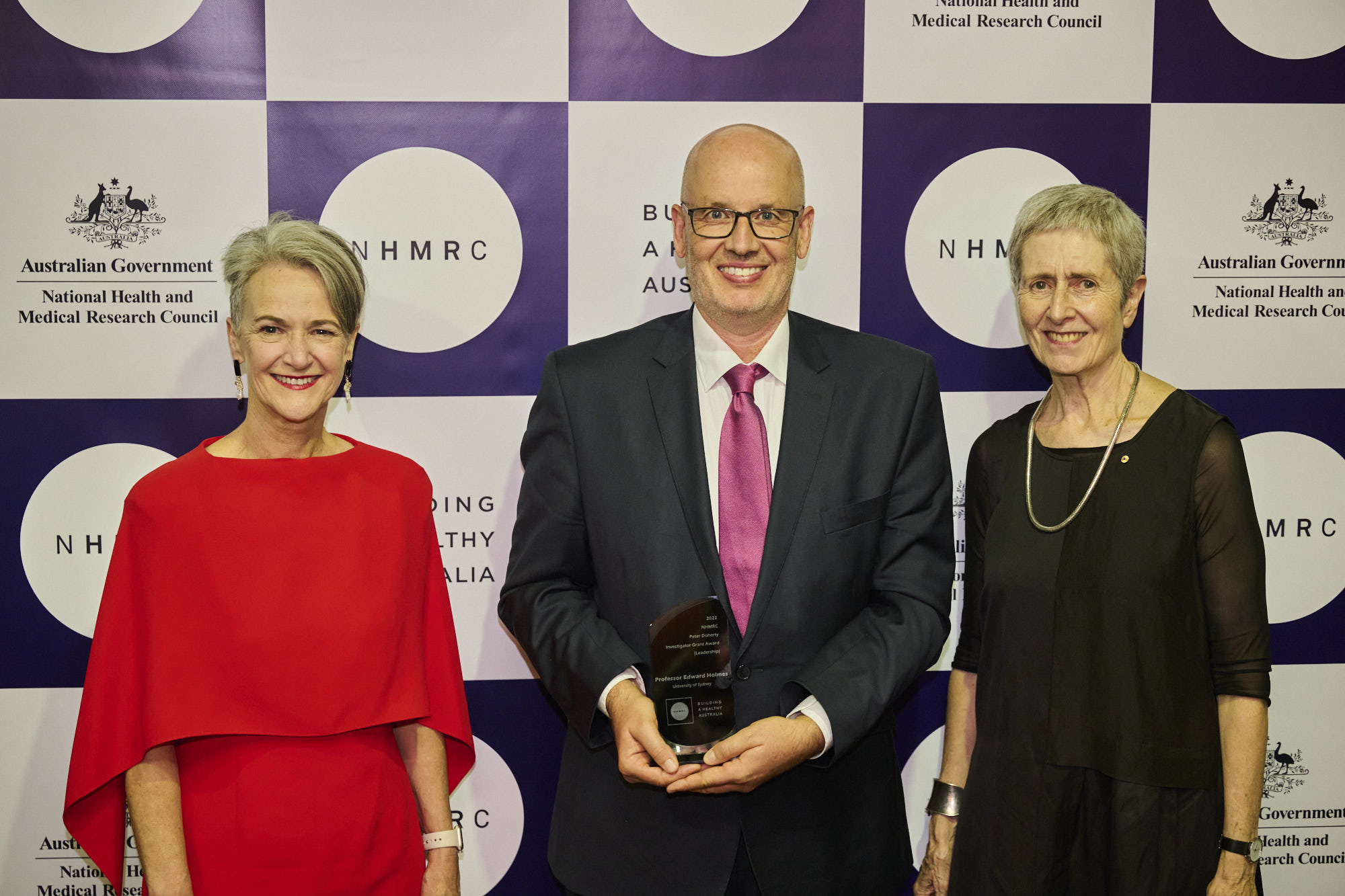It is challenging to contemplate, but the world can expect to experience pandemics like COVID-19, and perhaps even larger in scale, in the future. Professor Eddie Holmes is developing a pandemic radar to rapidly detect emerging viruses and determine which are most likely to have pandemic potential. His research focuses on understanding the fundamental mechanisms of virus ecology and evolution, as well as how viruses jump species boundaries to emerge and cause disease in new hosts.
Professor Holmes received the 2022 NHMRC Peter Doherty Investigator Grant Award (Leadership) as the highest ranked recipient in the Leadership category of the 2022 Investigator Grants round. The Peter Doherty Investigator Grant Award is also presented in the Emerging Leadership category of Investigator Grants.
Read on to find out more about Professor Holmes's research, in his own words.

Increasing contact between humans and the wildlife species that carry a myriad of viruses, coupled with the profound impact of climate change, guarantee that COVID-19 will not be the last human pandemic.
We need to do everything we can to prevent new viruses from emerging in humans, and to rapidly control them if they do appear.
Disease outbreaks, epidemics and pandemics occur because viruses jump from animals to humans.
Although this process may seem alien to Australia, the more our cities expand into once green spaces, the greater the chance that it could happen here.
My interest in emerging viruses began in 1990 when I was working as a postdoc in the US. Living close to San Francisco gave me a glimpse of the devastating impact of HIV/AIDS. But I also learnt how viruses could be studied from an evolutionary perspective. This has been my guiding principle ever since.
COVID-19 has led to a broad consensus that the world needs a ‘pandemic radar’ to rapidly detect new viruses and study their evolution and spread. The goal of my research is to provide the technological foundation for how this radar might work.
Fortunately, modern genome sequencing technologies provide a remarkably powerful tool to detect novel viruses.
I aim to build new platforms that use these data to rapidly and accurately identify viruses that have the potential to successfully emerge in humans.
Key to my research program is a technique called metatranscriptomics. This enables all the expressed RNA in a human or animal sample to be sequenced in a single assay. Importantly, not only does this generate host RNA, but also the RNA from all the viruses, bacteria, fungi and parasites in that host.
It’s the most powerful way to detect new pathogens and its use meant that SARS-CoV-2 was first discovered within hours of the samples arriving in the lab.
But while metatranscriptomics is incredibly powerful, because many human genomes’ worth of data are generated at a time, it is also very cumbersome to analyse. It is also difficult to determine which of the viruses detected might have pandemic potential in humans.
One the aims of my research program is therefore to develop computational tools that analyse this wealth of genomic data to rapidly and accurately identify viruses with the potential to infect humans.
One of the most important things we learnt during the COVID-19 pandemic was that viruses regularly jump from animals to humans. Fortunately, the vast majority of these viruses either fail to replicate in the new species, or never transmit in the wider population. But every time a species jump occurs, there is a small chance that the virus will take-off and cause a local outbreak, or even worse, a major epidemic or pandemic. It is therefore critical to know what animal viruses sporadically appear in humans.
I will use metatranscriptomic sequencing to identify viruses with pandemic potential in the Australian environment. The focus will be on sampling the animal-human interface. This means surveying the viruses from patients with undiagnosed diseases, in wastewater systems, and in vector species like mosquitoes, ticks, leeches that connect humans to wildlife populations. It is just this sort of next-generation smart surveillance that will help save us from the next pandemic.
Metatranscriptomics marks a new age in disease surveillance and will underpin strategies for pandemic control and mitigation. My research program will perform the groundwork to understand the disease threat posed by emerging viruses, so helping to protect Australia from future pandemics.

